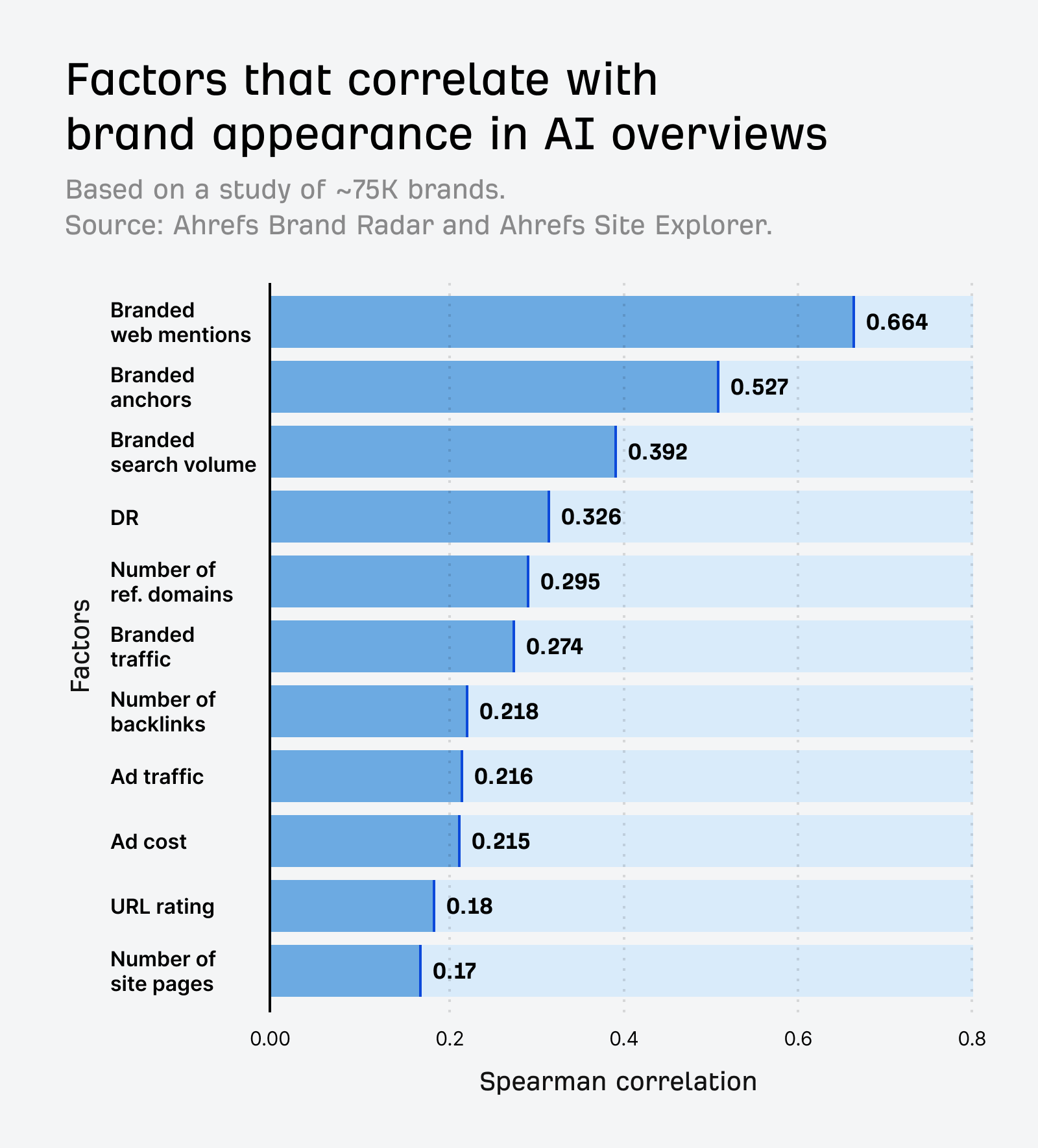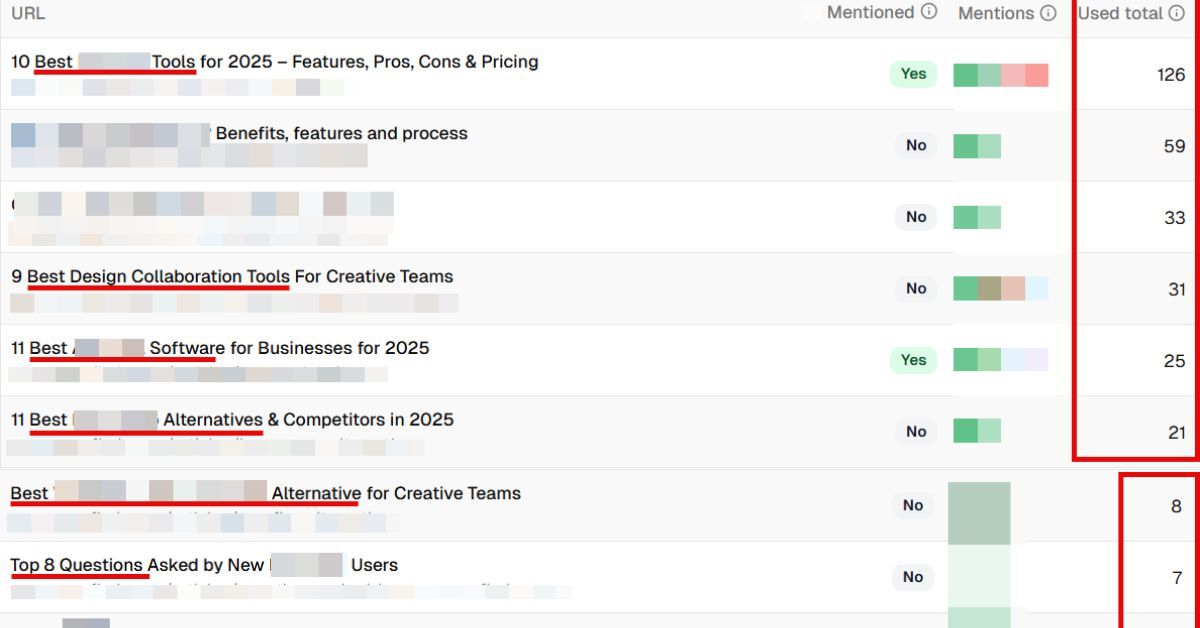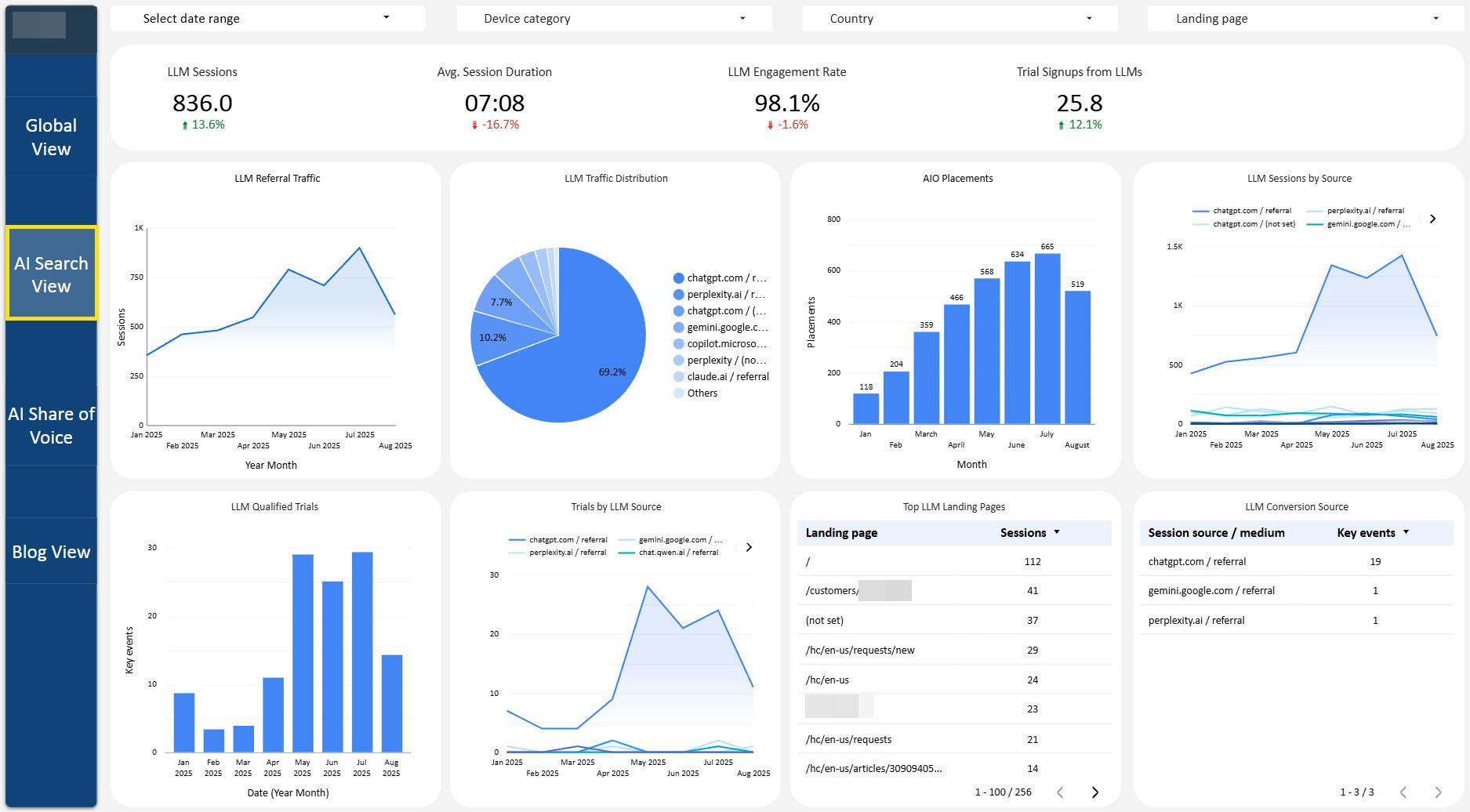10 Generative Engine Optimization Strategies (With Case Studies)

Most companies still treat SEO and generative engine optimization (GEO) as two different playbooks. They’re not. The fundamentals of SEO still drive results — you just need to know which levers matter most in the age of AI search.
Here’s proof.
One SaaS client generated 20+ free trial signups per month directly from ChatGPT citations by doubling down on the right content types, clustering, and internal linking.

This post breaks down the exact GEO strategies behind results like these, and how you can adapt them to boost visibility in AI search.
Why GEO Matters Now
Search isn’t ten blue links anymore.
LLMs like ChatGPT, Perplexity, Claude, and AI Overviews are reshaping how people discover and evaluate brands. Instead of scanning SERPs, users get direct, synthesized answers, and the companies that get cited in those answers are the ones winning attention, trust, and conversions.
GEO is a central part of a broader search marketing strategy. The traditional formula of rank, click, and convert has become limited. Today, brands need to also be focusd on earning citations, mentions, and accurate representation in generative outputs.
Below is a playbook of GEO strategies designed to maximize your visibility, with examples, stats, and formats optimized for large language models.
Backlinks have long been a core component of successful SEO strategies.
However, new research from Ahrefs indicates that web mentions outperform backlinks 3:1 for AI Overview presence. AI systems care more about whether your brand is being talked about than whether it has a hyperlink. That flips link building on its head.

Strategy 1: Audit for Relevance Instead of Authority
Do high-DR sites still matter in GEO?
Not the way they used to. In generative search, a niche blog at DR 30 can get mentioned ahead of Forbes at DR 90 if it’s contextually relevant. Engines prioritize topical alignment over raw authority scores.
Action Step: Audit where your brand is being cited and identify gaps. Run high-intent prompts in ChatGPT, Claude, or Perplexity (“best software for X,” “[Competitor] alternatives”). Check the sources: Are you mentioned? Do you have content in the same format (listicle, comparison, guide)?
Those answers guide PR, link building, and content strategy.
Tip: Tools like Peec AI make this scalable by showing which URLs and brands LLMs cite most.
Strategy 2: Target Web Mentions Over Backlink Counts
Do mentions matter more than backlinks?
Yes. Studies across 75,000 brands found that brand mentions correlate more strongly with AI visibility than backlinks.
- Unlinked mentions count: Reddit threads, forums, industry blogs.
- Anchor text trends: Branded anchors show a 0.527 correlation with AI presence, while keyword-stuffed anchors underperform.
- Brand search volume: A 0.392 correlation with AI visibility, signaling trust to engines.
Action Step: Track brand mentions separately from backlinks. Backlinks matter, but GEO goes further. You need authentic mentions across the entire SERP ecosystem — Reddit threads, YouTube videos, aggregator sites, listicles, and organic results. These touchpoints feed LLM outputs just as much as traditional rankings. Audit where your brand shows up, compare it to competitors, and use the gaps to steer PR, content, and outreach.
Strategy 3: Diversify Content Targets
Which pages do generative engines cite most?
Engines often pull from product pages, solution pages, case studies, listicles, competitor comparisons, and product documentation, not just homepages.
- Build solution pages tailored to industries and roles (“CRM for Real Estate Teams”).
- Create integration pages for major partners (“[Your Product] + Salesforce”).
- Expand migration and support resources so LLMs can surface structured answers.
- Publish FAQ hubs covering pricing, features, integrations, and security.
These formats make it easier for models to lift precise, structured details.
Bonus insight: Our team analyzed the top-cited content types across our client base and shared them in this post.

Strategy 4: Optimize Anchors and Branded Search
What type of anchor text works best in AI search?
Branded anchors consistently outperform keyword-stuffed ones. Natural mentions of your company name carry more weight.
At the same time, brand search volume correlates more strongly with AI visibility than link velocity. In practice, this means building campaigns that increase branded search demand while prioritizing brand mentions and branded anchors.
Strategy 5: Create Citation-Worthy Content Types
What content formats do LLMs cite most often?
- Product-centric FAQs with schema markup
- Industry and role-based solution pages
- Integration pages tied to major platforms like Salesforce or Slack
- Lists and comparisons (“Best X Tools,” “X vs Y Alternatives”)
- Stats roundups and benchmarks
- How-to guides with templates
- Original research and reports
These categories consistently appear in ChatGPT, Perplexity, and AI Overview answers because they’re structured, intent-specific, and easy for models to paraphrase.
Tip: Get your free LLMO checklist and cheat sheet from Virayo and use it right away.
Strategy 6: Engineer Placement Opportunities
How do you get cited if competitors dominate sources?
Generative engines frequently pull from a handful of trusted domains in each niche. To expand your GEO footprint:
- Identify which sources are consistently cited for your priority queries
- Earn placements through guest contributions, joint research, or PR
- Secure listings in roundups, directories, or comparison posts where competitors appear but you don’t
Borrowing authority from already trusted sources accelerates your brand’s presence in generative answers.
Strategy 7: Focus on Brand Accuracy in LLMs
Does accuracy matter as much as visibility?
Yes. Being mentioned inaccurately can hurt conversion rates and positioning. Engines sometimes misclassify ICPs, pricing models, or product categories. For example, an enterprise SaaS solution misrepresented as a freelancer tool will attract the wrong customers.
Action Step: Monitor how your brand is described in ChatGPT, Perplexity, and Google AI Overviews. If you see inaccuracies, identify the source pages, update your own content, and request corrections from third parties. GEO is as much about controlling the narrative as earning mentions.
Tip: Pay close attention to pricing, ICP positioning, and core features.
Strategy 8: Use Multi-Format Distribution
Do engines cite beyond text content?
Yes. Video, Reddit threads, and structured data are increasingly present in AI Overviews. Creating a simple YouTube video aligned to a primary keyword can push your brand into AI citations within days. Embedding that video in an already ranking blog post strengthens both SEO and geo signals.
Action Step: Supplement web content with video, schema, Wikipedia entries, and Reddit/Discord participation. Diversify the touchpoints where models can encounter your brand.
Strategy 9: Optimize for Parseability
How do you make content more “LLM-friendly”?
- Structure with clear headings, tables, and bullet points
- Reinforce semantic clusters across related posts
- Add schema markup for FAQs, reviews, and how-tos
- Strengthen internal linking to build topical authority
The easier your content is to parse, the more likely LLMs will include it in outputs.
Strategy 10: Monitor and Iterate
Does GEO require ongoing monitoring?
Absolutely. Generative search is evolving quickly, and citation patterns shift as models update. Build a monitoring loop:
- Audit your most important queries in ChatGPT, Perplexity, and AI Overviews
- Track which competitors and domains are getting cited
- Adjust your placements, content mix, and distribution accordingly
- Run experiments testing which formats (stats posts, how-tos, comparisons) get surfaced most
- Treat GEO as a cycle of research, optimization, and iteration.
Tip: Our LLM visibility dashboard makes this easy. It tracks referral traffic from LLMs, conversions (trials, demos, etc.) with trends over time, top sources by traffic and conversions, top landing pages, and AIO placements growth. It gives you a clear, top-level view of performance in AI search.

GEO as Competitive Edge
Generative Engine Optimization is no longer optional. It’s the natural extension of SEO in the age of AI search. The brands showing up inside generative answers today are shaping perception and capturing demand before a user ever clicks. By focusing on brand mentions, citation-friendly formats, placement opportunities, accuracy, and multi-format distribution, you’ll position your business to win in AI-powered discovery.
SEO built the foundation. GEO builds the future.
Schedule a call with our lead strategist to find out how your brand can increase LLM visibility, traffic and leads.



.png)











